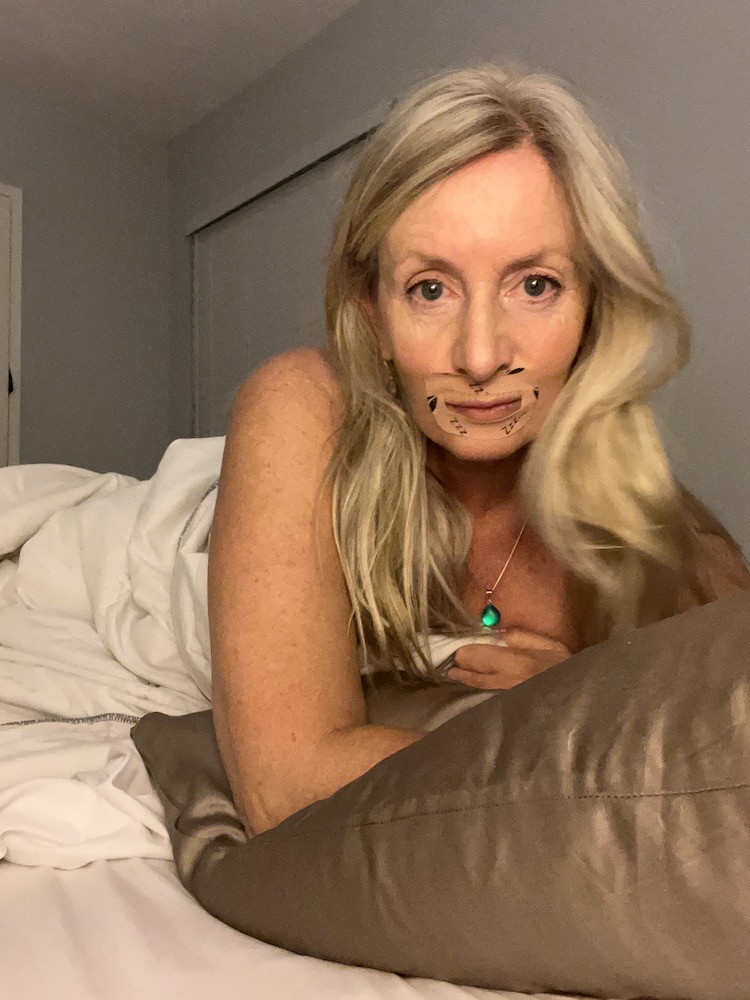Harnessing the Power of a simple Breathwork tool for Better Sleep During Perimenopause and Menopause
Breathwork tools make a difference! Sleep disturbances during any phase of life can significantly impact a woman's overall well-being and quality of life. However, by incorporating breathwork techniques and a simple breathwork tool as part of your nightly routine, women in perimenopause and menopause can effectively improve their sleep quality and as a result have better health.
The hormonal fluctuations that occur during perimenopause and postmenopause can significantly impact a woman's sleep patterns. Estrogen and progesterone, two key hormones involved in regulating the sleep-wake cycle, fluctuate during these stages of life. Symptoms can include:
Hot Flashes and Night Sweats:
Fluctuating estrogen levels can lead to hot flashes and night sweats, which are common symptoms during perimenopause and postmenopause. These disrupt sleep by causing frequent awakenings throughout the night and then women experience difficulties in falling back to sleep again after being stressed by the experience and there mind starts ticking and so begins the 'tired & wired' experience of high cortisol levels and a nervous system in fight or flight that makes it really hard to feel calm and sleep well.
Insomnia:
Hormonal changes can also contribute to insomnia, making it difficult for women to fall asleep or stay asleep throughout the night. This can be due to increased anxiety, mood changes, or physical discomfort associated with hormonal fluctuations. How we breathe has a direct impact on our levels of anxiety and mood. If our brain doesn't have enough oxygen it will be in a high alert and stressed state. It's the simple fact of our body not being able to meet its needs on a physiological basis.
Sleep Apnea:
The risk of sleep apnea tends to increase after menopause due to the changing levels of progesterone. Progesterone helps maintain upper airway patency during sleep, reducing the risk of sleep apnea/snoring, so the opposite happens when we have less of it. Even if we are getting 8 hours of sleep, it may not be quality sleep because if we are snoring our sleep is disrupted. Snoring prevents the snorer from entering into or maintaining deep, restorative REM (rapid eye movement) sleep, which is crucial for cognitive function, memory consolidation, and emotional regulation.
Let's delve into the benefits of breathwork and mouth taping for enhancing sleep during this transformative phase of life.
The Power of Breathwork tools and techniques:
Breathwork, or conscious control of our breathing patterns, offers a holistic approach to promoting relaxation, reducing stress, and improving every cell, organ and system in our body. Everything happens downstream of how we are breathing. By incorporating specific breathwork techniques into daily practice, we can calm our minds, balance hormones, and prepare the body for restful sleep, the foundation and cornerstone of our health.
How we breathe during the day will influence how we breathe during the night.
When we have functional breathing during the day, we will breathe in a way that optimises our sleep at night.
The more time you spend breathing both in and out during your nose during the day the better. You also want to make sure and train your tongue to have it's natural resting pattern on the top of your mouth.
The position of the tongue plays a key role and can have a significant impact on breathing, particularly during sleep.
HOW & WHY:
Airway Obstruction:
Nasal Breathing:
The position of the tongue can affect whether a person breathes through their nose or mouth. Proper tongue posture, with the tip of the tongue resting against the roof of the mouth just behind the front teeth, helps to maintain an open nasal airway and promote nasal breathing. Nasal breathing is important for humidifying, warming, and filtering the air before it reaches the lungs, as well as for stimulating the production of nitric oxide, which has various health benefits.
Mouth Breathing:
If the tongue rests low in the mouth or falls back into the throat, it can contribute to mouth breathing. Mouth breathing bypasses the natural filtration and humidification processes of the nose, leading to dry mouth, throat irritation, and an increased risk of respiratory infections. Mouth breathing during sleep is what can lead to snoring, sleep apnea, and poor sleep quality.
Muscle Tone:
The muscles of the tongue and throat play a crucial role in maintaining airway patency during sleep. Weak or lax tongue and throat muscles can contribute to airway collapse and obstruction, especially when lying on your back. Strengthening exercises for these muscles, such as tongue exercises and oropharyngeal exercises, can help improve airway function and reduce the risk of sleep-disordered breathing.
This is where a Breathwork Tool comes in.
Mouth Taping Benefits
*:
Using Mouth tape helps promote nasal breathing during sleep**, which improves oxygenation and airflow, leading to deeper and more restorative and restful sleep. Nasal breathing facilitates the exchange of gases in the lungs, leading to improved oxygenation of tissues and organs. By promoting nasal breathing, mouth taping ensures optimal oxygen delivery during sleep, supporting overall health and vitality.
*Prevention of Mouth Breathing**: Mouth breathing during sleep can lead to snoring, dry mouth, and fragmented sleep patterns, while nasal breathing is associated with better sleep quality. Mouth taping serves as a non-invasive solution to prevent mouth breathing and promote uninterrupted sleep
*Enhanced Nitric Oxide Production**: Nasal breathing stimulates the production of nitric oxide, which supports respiratory health and vasodilation, improving oxygen delivery to tissues.
*Reduced Risk of Sleep Apnea**: Mouth taping can be beneficial if you’re prone to sleep apnea by encouraging proper breathing patterns and reducing airway obstruction during sleep.
By sealing the lips with tape, mouth taping encourages the body to rely on nasal breathing, ensuring a steady flow of oxygen and improved sleep quality.
There are different ways to do this and different products you can buy.
My personal preference of mouth tape is Myotape as this goes on the outside of the lips and still allows you to talk, sip water and open your mouth so you don't have any claustrophobic feeling of being kidnapped.
It feels weird to have something stuck to your face so stick with it for the a few nights before you pass judgement. You may wake up and find it crumpled up on your pillow in the morning, this just means that at some point in th night your desire to mouth breathe was big and you took it off.
No problem, try it again.
After 3 or 4 days i noticed that I had more of my tongue in contact with the upper palate of my mouth and I also felt very 'cosy' and relaxed when I woke up, and didnt want to take it off.
Some people simply use a small piece of medical tape or even scotch tape and place it vertically across their lips.
Some people go for horizontal.
Experiment - only you know what will or wont work for you.
Practice Consistency: Consistency is key when incorporating breathwork and mouth tape into the nightly routine. Make a commitment to practice these techniques regularly to experience their full benefits and improve sleep quality over time and making sure you stay aware of how you are breathing during the day.
Conclusion:
In conclusion, breathwork techniques and using a breathwork tool such as mouth tape at night offer valuable support for anyone looking to increase their health and sleep well during the night and ESPECIALLY women in perimenopause and menopause seeking to improve their sleep quality and overall well-being. By incorporating a way that helps you nasal breathe during the night, you can improve your chances of a good nights sleep, reduce stress, and enhance nasal breathing, leading to deeper, more restful sleep.
As women navigate through the changes of perimenopause and menopause, prioritising sleep and incorporating these simple yet effective practices can make a significant difference in their sleep health and overall quality of life.


